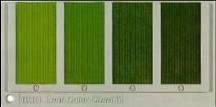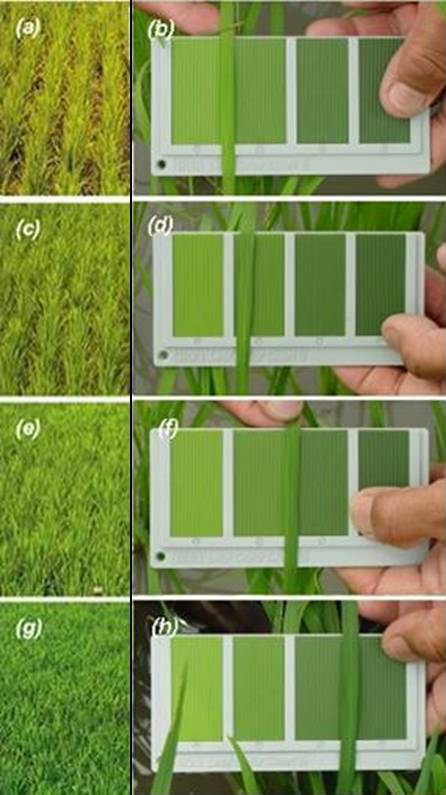|
Using the Leaf Color Chart (LCC) to Manage Nitrogen |
|||||
|
A. What is the LCC?
The LCC is a simple, easy-to-use and inexpensive tool that can help farmers determine the right time to apply N to rice crops. The LCC is used for monitoring the relative greenness of a rice leaf as an indicator of the plant N status. It helps farmers to optimize N use at profit high yield levels, regardless of the source of N applied – organic (manure, crop residue, etc) or inorganic (e.g., urea, NPK, etc.).
The Leaf Color Chart (LCC) |
|||||
|
B. Why use the LCC?
Nitrogen (N) fertilizer is one of the major inputs in rice production. For efficient use of this input, farmers should apply fertilizer N several times during the growing season to ensure that the N supply matches the crop need for N at the critical growth stages of the crop for greater yield; in this way, fertilizer N losses are minimized. The LCC is a simple and inexpensive tool that can improve farmers’ decisions about N management for rice.
|
|||||
|
C. How to use the LCC?
|
|||||
|
The photos illustrate the use of the standardized LCC to assess leaf N status and adjust N applications to rice:
|
|||||
|
How to order an LCC?
To order a set of LCCs and accompanying documentation, please email r.buresh@cgiar.org or consult the SSNM web site at www.irri.org/irrc/ssnm
|

